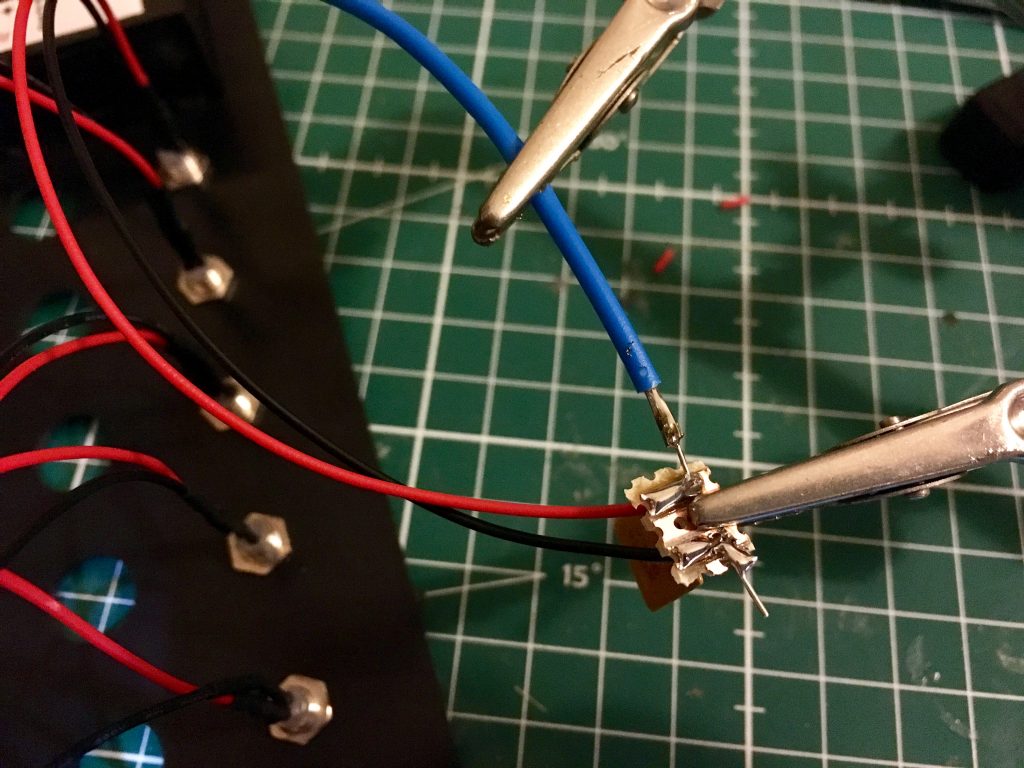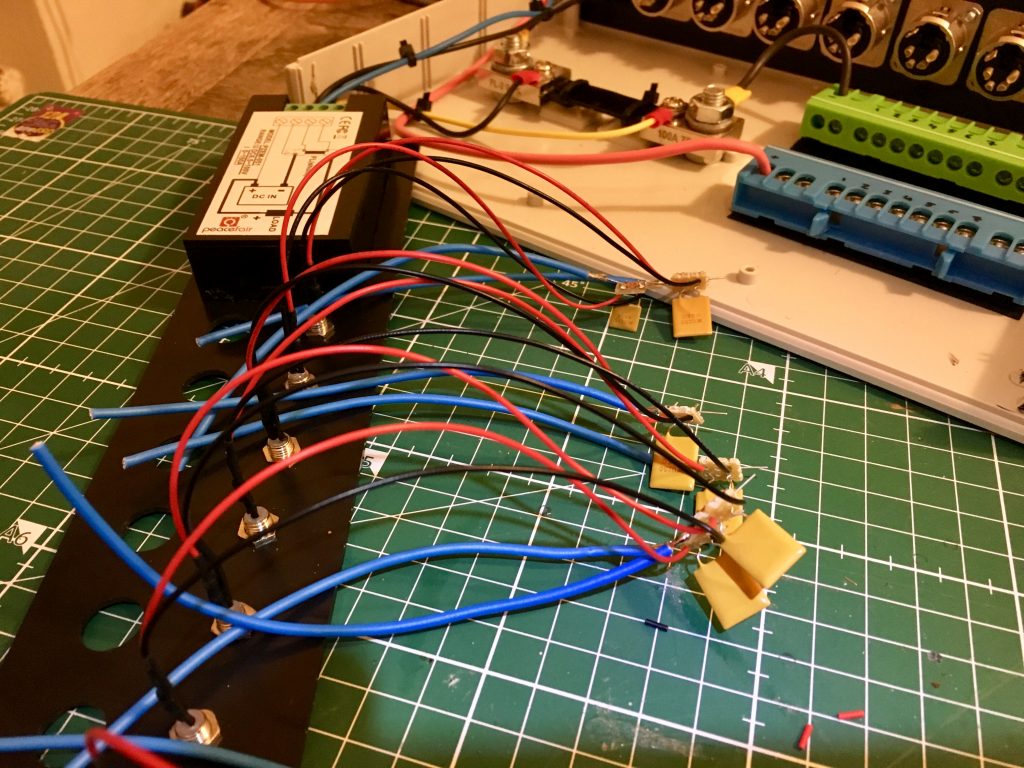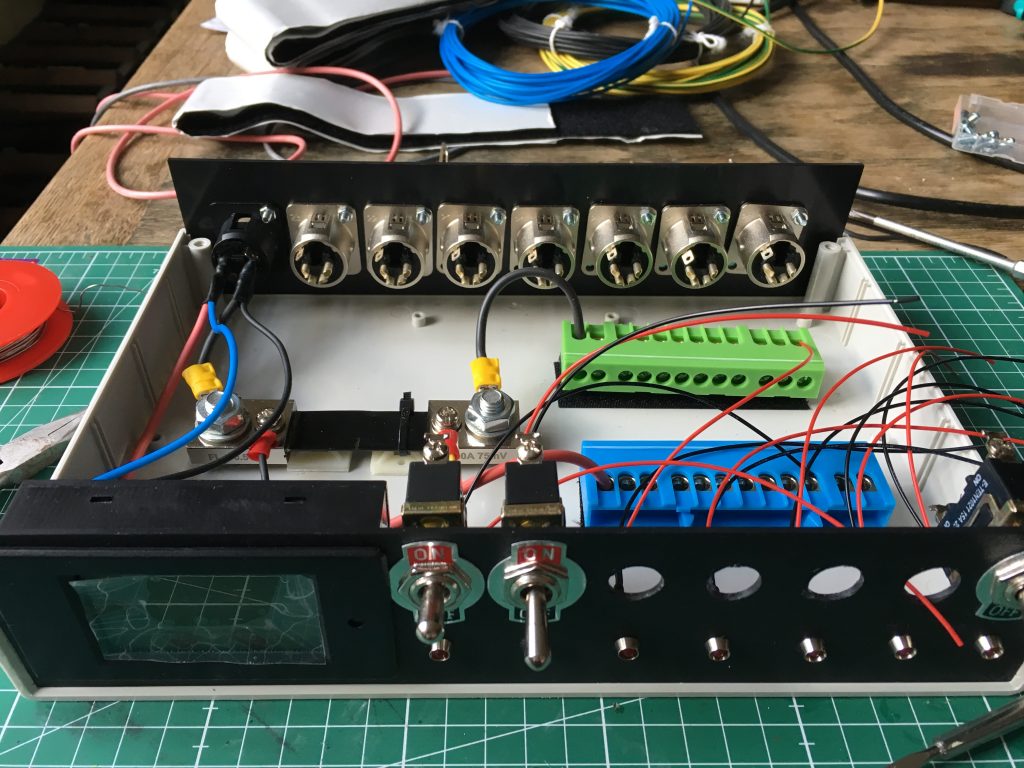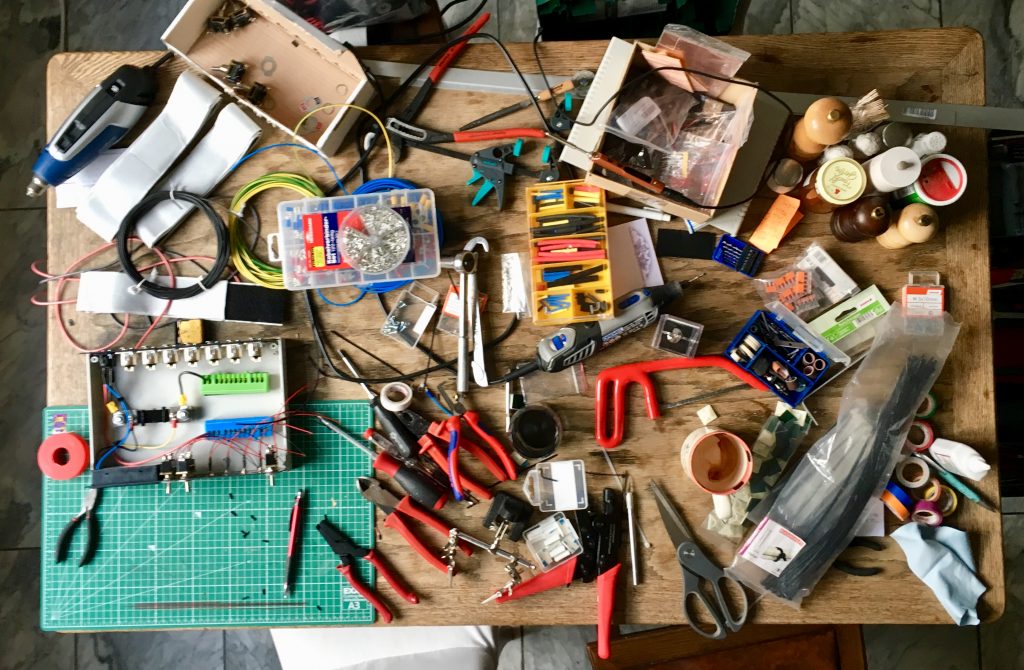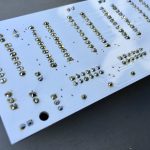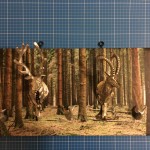From Idea To Product
On a typical sound-cart for motion-picture and TV filmmaking there are lots of devices that require something around 11–14V DC. The recorder, mixer, wireless microphone receivers and maybe a light all need this kind of power. So it is pretty handy if they all can be powered from a single big rechargeable Li-Ion battery. For this purpose I built a power distribution box that connects all these devices to one power source and that has individual switches for all of them so the ones not in use can be powered off easily.
Feature-List
- 4-pin XLR connections
- one input
- seven outputs
- seven on/off switches
- LCD for voltage, current and power consumption metering
- self-resetting fuses on every output
- solid plastic or aluminum housing
Prototype
I started out with an empty cardboard box I had lying around. To see if all the switches and the LC display fitted the space it provided I made a kind of prototype.
Fuses
Now I knew how much space I needed to fit all the parts. I had never before worked with self-resetting PTC polyfuses so I experimented around a little bit.
I also thought it would be nice to have an LED light up whenever one of those fuses goes off. So I soldered a tiny circuit board to each output socket that connects the output, the fuse and the LED. The LED actually bridges the fuse. That means: when the fuse goes off (meaning it becomes non-conductive) all the voltage is dropped across the LED and its built-in resistor so it lights up.
LCD
The LCD I used was bought as-is off eBay and it came with a wiring diagram which I had to implement into my build.
Schematic
So this is the schematic for the whole box. Notice the LEDs are missing in this. the go across the yellow ohm symbols.

The Build
After ordering a plastic housing of the correct size I went to work and started putting it all together as best I could.
Finished
The result came out quite nice, I think.














